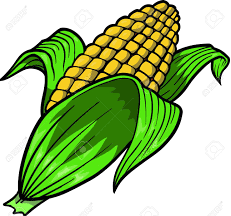We had a discussion during our last “winter golf” session that always amazes me. A lot of people that I know are not aware that brooms (before plastic came along) were made from corn — specifically, broomcorn. (You can read about broomcorn in a number of places in this blog — search the archives if you’re interested.) Anyhow, explaining broomcorn to people always produces an interesting dialogue.

But “regular” corn is a pretty interesting subject, too. For instance, did you know that corn always has an even number of rows on each ear? Here’s the “scientific” explanation as to why…. An ear of corn is actually an inflorescence (the complete flower head of a plant) that produces nearly 1,000 female flowers. These flowers, or potential kernels, are arranged in an even number of rows (usually from 8 to about 22 rows.) The number of rows is always an even number because corn spikelets are borne in pairs, and each spikelet produces two florets: one fertile and one sterile. Stress at a particular stage in development could theoretically produce an ear with an odd number of rows, but if you look under a microscope, you’ll probably find an unseen row that failed to develop fully.
The average ear of corn has 800 kernels, arranged in 16 rows.
Many years ago, finding odd-rowed ears of corn was sometimes used to make impossible-to-come-true promises. For instance, slaves might be told that they could have their freedom if they could find an ear of corn with an odd number of rows.
There’s a story told of a slave who, on being promised his freedom if he could find an ear of corn having an odd number of rows or kernels, went into the corn field and carefully opened the husks on a number of ears and deftly cut out a row kernels from each, closing up the husks over the ears again. The corn grew and ripened, closing up in its growth the vacant spaces, and when it was gathered he found an ear with an odd number of rows, and presented it and claimed his promised freedom.
If you’re ever in South Dakota, you should stop by Mitchell, South Dakota — home of the world’s only Corn Palace. It was built 1892 to display the products of the harvest of South Dakota’s farmers — in murals on the outside of the building. The murals are made from thousands of bushels of corn and other gains and grasses such as wild oats, rye, straw, and wheat. Each year the corn decorations are completely stripped down and entirely new murals are created.
Corn is the 3rd most important crop of the world measured by production volume, behind wheat and rice. In terms of acreage planted, it is second only to wheat.
Corn is used in the production of alcohol, and distilled spirits, corn syrup, sugar, cornstarch, synthetic fibers such as nylon, certain plastics, in the manufacture of wood resin, lubricating oils and synthetic rubber, as an abrasive, corn cob pipes, corn oil, margarine, saccharine, paints, soaps, linoleum and gasohol. It’s an ingredient in more than 3,500 grocery products.
So if you’re not like me, growing up thinking corn was just something brooms were made of, you realize the importance of corn in our lives…. it was discovered by Indians, is distributed by farmers, distilled by moonshiners, and dispensed by comedians.
— 30 —
